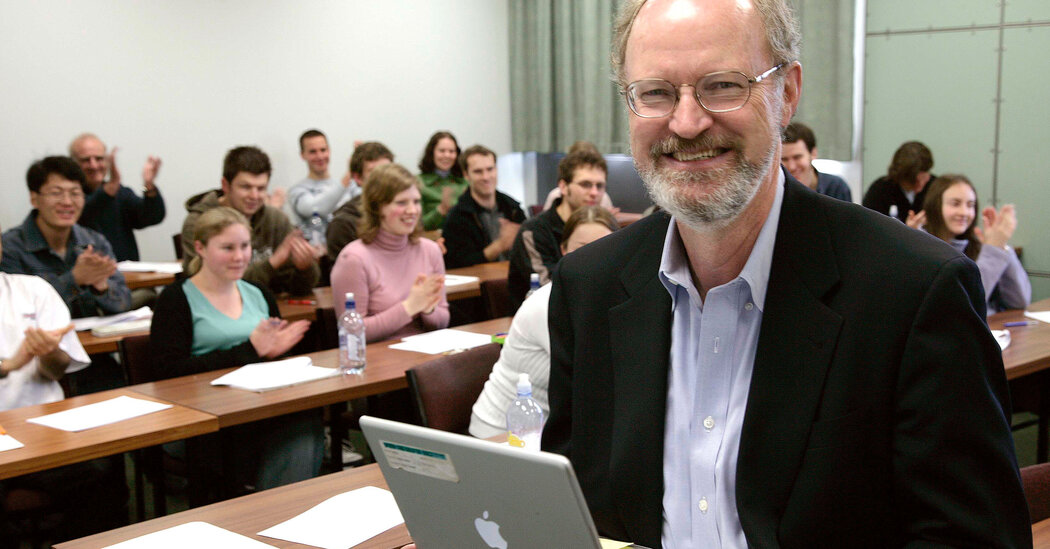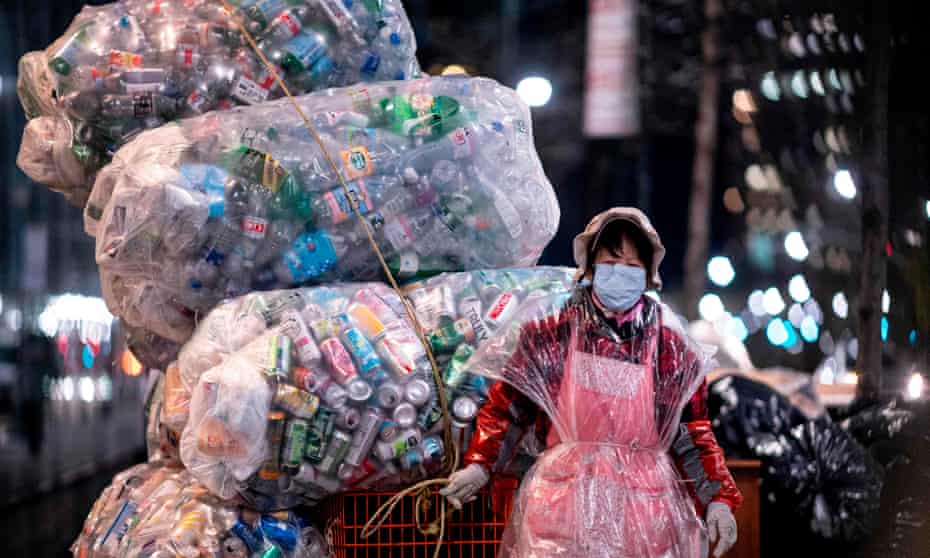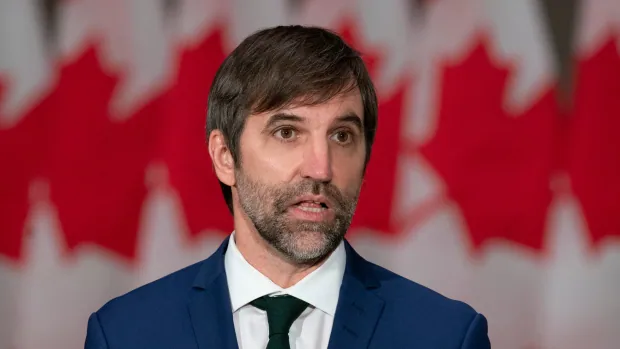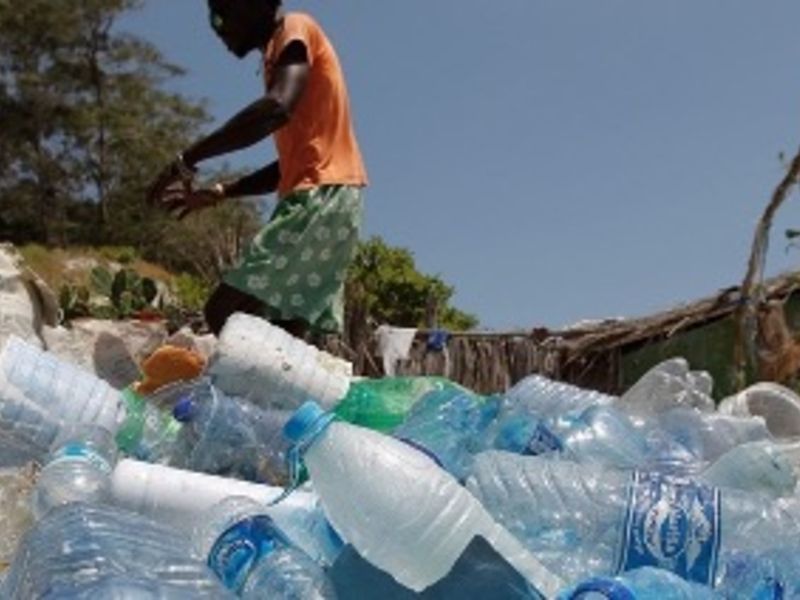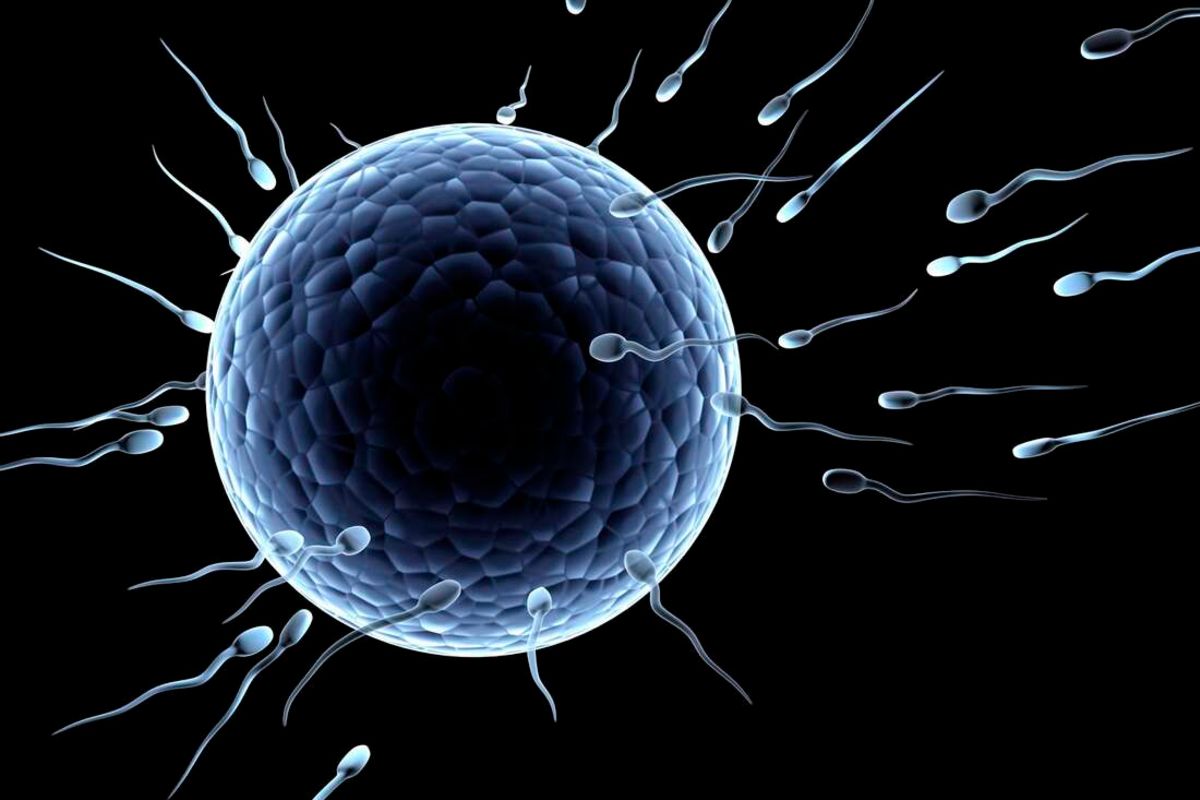He helped perfect the manufacturing of compounds that are now used to make everything from plastics to pharmaceuticals, marking an advance in “green chemistry.”Robert H. Grubbs, an American chemist who helped find a way to streamline the manufacturing of compounds that are used to make everything from plastics to pharmaceuticals so that they produce less hazardous waste, a “green chemistry” breakthrough that brought him a share of the Nobel Prize in 2005, died on Sunday in Duarte, Calif. He was 79.His son Barney said the cause was a heart attack, which Dr. Grubbs suffered while being treated for lymphoma at the City of Hope Comprehensive Cancer Center.The process that Dr. Grubbs helped perfect is called metathesis (pronounced meh-TATH-eh-sis), which means “changing places.” It allows molecules to break and then form again as strong “double bonds” of carbon atoms, creating new compounds.Metathesis was first discovered and used in the 1950s, but how it worked remained a mystery until it was explained in 1971 by the French chemist Yves Chauvin and a student of his, Jean-Louis Hérrison.They showed how a metal-carbon catalyst can pair with the fragment of a molecule to create a temporary bond, like two dancers clasping their four hands. The newly created bond then finds another, similar pair of molecules — the two dancers are joined by two others — forming a ring. The ring then breaks apart, and the catalyst goes off with a molecular piece from the second pair, which rearranges its carbon bonds.Metathesis is extremely effective, but some of the early catalysts were difficult to work with and could be unstable. In 1990, Richard H. Schrock, a professor at the Massachusetts Institute of Technology, made a breakthrough by developing catalysts based on the metals tungsten and molybdenum. The new catalysts were more efficient, but they still had shortcomings, notably that they fell apart when exposed to air.Working separately, Dr. Grubbs, who had begun his research on metathesis in the 1970s, in 1992 came up with catalysts that used the metal ruthenium. His catalysts were not always as efficient as Dr. Schrock’s, but they were stable in air and more selective in how they bonded with molecular chains.Dr. Schrock said of Dr. Grubbs’s work, “He was the one who really took what I did and turned it into something practical.”The remarkable thing about metathesis was that it worked at all, Dr. Grubbs said. “Carbon-carbon double bonds are usually one of the strongest points in the molecule,” he explained. “To be able to rip them apart and put them back together very cleanly was a complete surprise to organic chemists.”The work of Dr. Grubbs and Dr. Schrock paved the way for metathesis to become a cornerstone of chemical manufacturing. The catalysts they developed, which are named for them, are in wide use today in making chemicals for a variety of manufacturing processes.In addition to their other advantages, the new catalysts produced far less waste, particularly hazardous waste. In announcing that Dr. Grubbs, Dr. Chauvin and Dr. Schrock would share the 2005 Nobel Prize in Chemistry, the Royal Swedish Academy of Sciences, which manages the prizes, said, “This represents a great step forward for ‘green chemistry,’ reducing potentially hazardous waste through smarter production.”Dr. Grubbs attending a reception in Washington in 2005 honoring that year’s Nobel Prize winners. Throughout his career he mentored hundreds of Ph.D. students and postdoctoral associates.Mark Wilson/Getty ImagesRobert Howard Grubbs was born on Feb. 27, 1942, on a farm in western Kentucky between Calvert City and Possum Trot. He was the second of three children of Howard and Faye Grubbs.Robert’s maternal grandmother was well read and educated, and his mother became a schoolteacher, working for more than 35 years in small rural schools. She had received a teaching certificate when she was younger, but it took her 28 years to earn her bachelor’s degree by taking night and weekend classes, sometimes with Robert in tow.Dr. Grubbs’s father was a mechanic who built the farmhouse where his children were born. He worked for the Tennessee Valley Authority, operating and maintaining heavy equipment for dams in western Kentucky and Tennessee.In an autobiographical sketch for the Nobel committee, Dr. Grubbs wrote, “The academic model of my mother and grandmother and the very practical mechanical training from my father turned out to be perfect training for organic chemical research.”Enrolling at the University of Florida, he majored in agricultural chemistry, combining his interest in science, developed in junior high school, and his boyhood passion for farming.One summer, while working in an animal nutrition laboratory analyzing steer feces, he was invited by a friend to work in an organic chemistry laboratory being run by a new university faculty member, Merle Battiste. Around that time, Dr. Grubbs became absorbed in a book called “Mechanisms and Structure in Organic Chemistry,” by E.S. Gould, which explained how chemical reactions work. His lab experience and the book persuaded him to devote himself to chemistry, he said.It was a lecture at the university by Rowland Pettit, an Australian chemist, that inspired Dr. Grubbs to begin looking into the use of metals in organic chemistry, exploratory work that would lead to the Nobel.After earning his undergraduate and master’s degrees at the University of Florida, he moved to Columbia University in New York for his doctoral degree, working under Ronald Breslow. Dr. Battiste had been Dr. Breslow’s first Ph.D. student. While at Columbia, Dr. Grubbs met and married Helen O’Kane, who is a speech-language pathologist from Brooklyn.He obtained his Ph.D. in 1968 and then worked for a year at Stanford University as a National Institutes of Health fellow. In 1969, he joined the faculty of Michigan State University and worked there until 1978. During that time he started his research on catalysts in metathesis.Dr. Grubbs was hired by the California Institute of Technology in 1978 and worked there until his death, advising and mentoring more than 100 Ph.D. candidates and almost 200 postdoctoral associates over they years.In 1998, he and a chemistry postdoctoral fellow, Mike Giardello, founded Materia, a Pasadena-based technology company that has the exclusive rights to manufacture Dr. Grubbs’s catalysts. The business was sold in 2017 to Umicore and then to ExxonMobil this year.Dr. Grubbs received the Benjamin Franklin Medal from the Franklin Institute in 2000 and was a member of the National Academy of Sciences, a fellow of the American Academy of Arts and Sciences and a member of the Royal Society of Chemistry.In addition to his wife and his son Barney, he is survived by another son, Brendan; a daughter, Kathleen; two sisters, Marie Maines and Bonnie Berry; and four grandchildren.As Dr. Grubbs wrote in his autobiographical sketch, his path toward the Nobel had been set as a boy.“As a child I was always interested in building things,” he recalled. “Instead of buying candy, I would purchase nails, which I used to construct things out of scrap wood.”Sometimes he would help his father rebuild car engines, install plumbing and build houses on the farms owned by his aunts and uncles, who mostly lived close by in Kentucky.But in the end, he wrote, he discovered that “building new molecules was even more fun than building houses.”
Author Archives: David Evans
Latin America urges US to reduce plastic waste exports to region
Latin America urges US to reduce plastic waste exports to region Study finds exports to region doubled in 2020 with practice predicted to grow as US invests in recycling plants Environmental organisations across Latin America have called on the United States to reduce plastic waste exports to the region, after a report found the US …
Continue reading “Latin America urges US to reduce plastic waste exports to region”
Canada moving to ban plastic straws, bags by end of 2022: Guilbeault
It’s the end of days for plastic grocery bags and Styrofoam takeout containers in Canada, but the products can still be manufactured for export.Environment Minister Steven Guilbeault published draft regulations Tuesday outlining how Canada will ban the manufacture, sale and import of these items, along with plastic cutlery, stir sticks, straws and six-pack rings, by the end of next year. The regulations outline how each of the products is to be defined; plastics bags for example are those made of plastic film which will break or tear if used to carry 10 kilograms over a certain distance. Cutlery includes forks, knives, spoons, sporks and chopsticks that will start to melt if immersed in hot but not boiling water. There are some exceptions for single-use plastic flexible straws to accommodate people with disabilities and those needing them for medical purposes. The public can provide written comment on the draft regulations until March 5, and the timing of the final regulations will depend on how much feedback is received. World Trade Organization rules mean Canada has to allow a six-month phase-in period once the final regulations are published, but Guilbeault said he expects them to take effect by the end of 2022. He said the ban is only part of the story because what isn’t being banned has got to be recycled. “I mean, rightly so, a lot of people are focusing on the ban and that’s important,” he said. “But one of the bigger challenges we have is to get our house in order when it comes to recycling.” A 2019 Deloitte report commissioned by Environment and Climate Change Canada said 3.3 million tonnes of plastic waste was tossed in 2016 and less than one-tenth of it was recycled. Environmental groups urge further action There were then only 12 recycling companies nationwide. Canada set a target to recycle 90 per cent of plastic waste by 2030 and Guilbeault said there is work underway to standardize and co-ordinate recycling across provinces. Standards for plastics to make them easier to recycle, as well as a requirement that half of all plastic packaging must be made of recycled material, are also coming, he said. In 2016, almost 30,000 tonnes of waste ended up in the environment, polluting rivers, beaches and forests with discarded coffee cups, water bottles, grocery bags and food wrappers. “People are tired of seeing this litter in our streets and I think some of the powerful images we’ve seen around the world of plastic waste affecting our ecosystem has really gotten to people,” Guilbeault added. “So they want us to move and we’re moving.” Sarah King, head of Greenpeace Canada’s oceans and plastics campaign, said the government is moving too slowly and isn’t going far enough. King wanted to see all single-use plastics banned, including plastic bottles, cigarette filters, coffee cups and food wrappers. With every day the government stalls, we are missing an opportunity to halt tonnes of plastic pollution from being dumped in the environment.- Gretchen Fitzgerald, Sierra Club of Canada Foundation “Canadians have been waiting a long time for the federal government to take strong and urgent action to tackle plastic waste and pollution and these regulations definitely don’t reflect that call to action,” she said. King said the government also needs to focus its energy and money on transitioning from single use and recycling to reuse and refill strategies. Environmental Defence, a Canadian advocacy group, welcomes the ban generally, but has concerns about the export of plastics. “The government must ban their manufacture for export or Canadian-made single-use plastic products will continue to pollute other countries,” Karen Wirsig, Environmental Defence’s plastic programs manager, said in a statement. “The government also needs to expand the list of banned single-use plastics, including hot and cold drink cups and lids, which are consistently found littered in the environment,” the statement reads. A federal government assessment on plastic pollution in 2020 reported that 77 per cent of the 4,800 kilotonnes of plastic polymers produced in Canada in 2016 were exported. “The government has determined, through thorough analysis, that prohibiting single-use plastics manufactured or imported for export would not lead to a global reduction in plastics,” a spokesperson for Guilbeault’s office told CBC News. “Rather, global demand would likely be met by businesses in countries that still allow for export.” “Minister Guilbeault’s mandate letter is clear about working with other countries to develop a global agreement on plastics that would target this issue more comprehensively,” the spokesperson added. The Sierra Club Canada Foundation, another environmental advocacy group, welcomed the news, but said it too wants to see the ban expanded. “We also need to expand this ban to include all unnecessary items of single use plastic, and we expect this list to be expanded in the New Year,” Gretchen Fitzgerald, the national programs director, said in a statement. “From announcement to implementation, this ban will take three years to come into force,” she continued. “With every day the government stalls, we are missing an opportunity to halt tonnes of plastic pollution from being dumped in the environment.” Prime Minister Justin Trudeau said in June 2019 that a ban on single-use plastics would be in place as early as this year, but the pandemic delayed the scientific assessment that ultimately declared plastics as “toxic.” It also slowed down work on which plastics to target. Industry pushes back on ‘toxic’ designation In May, companies came together under the banner Responsible Plastic Use Coalition, which has now sued the government over the designation of plastics as toxic. The coalition argues the designation is defamatory and harmful to its industry, which produces many crucial products that are not harmful. A spokesman for the coalition said Tuesday the government should have waited until that case has concluded before moving on the ban. Guilbeault said the lawsuit has no effect on the regulatory progress, “just like the lawsuit on carbon pricing didn’t interferewith us implementing carbon pricing in Canada.”
A car made from recycled plastic? This could be the future
What comes around goes around: Your discarded plastic water bottle may soon become part of your next car.Automakers are racing to make their vehicles more sustainable — the industry’s favorite buzzword — by turning environmentally unfriendly materials into seat cushions, floors, door panels and dashboard trims. First it was reclaimed wood. Then “vegan” leather. Now, plastic waste from the ocean, rice hulls, flaxseeds and agave are transforming the manufacturing process.”Everyone is awakening to the problems of plastic and waste,” Deborah Mielewski, a technical fellow of sustainability at Ford, told ABC News.Ford in particular has been championing the use of renewable materials in its vehicles. In 2008 it replaced the petroleum-based polyol foam in its Mustang sports car with seat cushions made from soy, an industry first. More recently Mielewski and her team started examining how to transform some of the 13 million metric tons of ocean plastic, which threaten marine life and pollute shorelines, into parts for future Ford vehicles. The result? Wiring harness clips in the new Ford Bronco Sport that were once nylon fishing nets.”Two years ago there was a lot of publicity around ocean pollution and we felt an obligation to do something,” Mielewski said.The wiring harness clip in the Ford Bronco Sport, made from recycled ocean plastic, is as durable as petroleum-based clips, Ford says.Ford acquires the recycled plastic from its supplier DSM, which collects the nets from fishermen who are paid to return them. The nets are harvested, sorted, washed and dried before they’re cut into small pellets and injection-molded into harness clips, which weigh about 5 grams and guide wires that power side-curtain airbags in the Bronco Sport.Mielewski said Ford is currently testing the recycled plastic’s durability for the Bronco Sport’s wire shields, floor side rails and transmission brackets.”My hope is we can replace many parts with this material,” she said, adding that more than half of Ford customers “care deeply about the environment and want to understand what companies are trying to minimize their footprint.”Brian Moody, executive editor of Autotrader, said automakers like Ford have been attempting to produce environmentally responsible vehicles for years. He recalled Ford’s Model U concept which premiered on Jan. 5, 2003, at Detroit’s North American International Auto Show. It had a hybrid engine and its door panels were built with a natural fiber-filled composite material.Ford Motor Company shows off the Model U concept car during a press conference at the North America International Auto Show, in Detroit, Jan. 5, 2003.”This is not just a passing trend. Sustainability is here to stay,” Moody told ABC News. “Environmental regulations are likely to become more strict in the years to come [and it’s] another incentive for automakers to start looking for a solution right now.”Automakers deliberately added plastics to reduce the weight and cost of vehicles and increase performance and fuel economy, according to Gregory Keoleian, director of the Center for Sustainable Systems at the University of Michigan.”About 40 different types of basic plastics and polymers are commonly used to make cars today and state-of-the-art separation technologies are very capital intensive,” he told ABC News. “The majority of plastics are derived from petroleum and natural gas feedstocks and when vehicles are retired these materials are generally disposed of in landfills.”For German automaker Audi, sustainable materials are a launching point to becoming net CO2 neutral by 2050. Recycled PET bottles are ground up and transformed into a polyester yarn, accounting for 89% of the seat material in Audi’s fourth-generation A3 car. An additional 62 PET bottles were recycled for the carpet in the A3. The carpet and floor mats in the all-electric e-tron GT are made from Econyl, a recycled nylon fiber constructed from fishing nets. The e-tron GT’s 20-inch wheels are also assembled from low-CO2 emission aluminum.In August, the company showed off its skysphere electric roadster concept, which featured sustainably produced microfiber seat fabric, environmentally certified eucalyptus wood and synthetically produced imitation leather.The Audi skysphere concept features sustainably produced microfiber fabric in the seats, environmentally certified eucalyptus wood and synthetically produced imitation leather.”Audi is committed to sustainable materials and we’re implementing these changes in new vehicles,” Spencer Reeder, director of government affairs at Audi, told ABC News. “We have very high standards and fully vet these products.”Reeder, however, said Audi’s top priority is expanding its lineup of electrified vehicles. By 2025, 30% of Audi vehicles in the U.S. will be full battery electric or plug-in hybrid.”We’re delivering on things that really truly matter to the environment,” he said. “The focus right now in the industry is on battery materials — nickel, lithium, magnesium — and sustainably sourcing those materials.”Keoleian pointed out that 17% of U.S. greenhouse gas emissions are from automobiles.”Automakers leading in sustainability are companies accelerating their launch of EV models,” he said.Stephanie Brinley, an analyst at IHS Markit, said automakers are promoting these green efforts aggressively because consumers are more curious and aware of the manufacturing process. These eco-friendly materials “have to look good and be durable and work” to win over consumers, she told ABC News.”If the material performs just as well, consumers will be happy,” she noted, adding, “You’d be hard-pressed to find a consumer who is against sustainable materials.”Volvo, the Swedish automaker, said it’s addressing all areas of sustainability — not just carbon emissions — in its vehicles. The company said it will go leather-free by 2030 and use a material it developed called Nordico that consists of textiles made from recycled material such as PET bottles, bio-attributed material from sustainable forests in Sweden and Finland and corks recycled from the wine industry.The carpet in the Volvo C40 Recharge EV is made of 100% recycled PET plastic bottles.The automaker has even been “looking to reduce the use of residual products from livestock production which are commonly used within or in the production of plastics, rubber, lubricants and adhesives, either as part of the material or as a process chemical in the material’s production or treatment,” according to Rekha Meena, Volvo’s senior design manager for color and material.”We see a growing trend in consumer demands for more sustainable materials, particularly alternatives to leather, in most of our key markets due to concern over animal welfare and the negative environmental impacts of cattle farming, including deforestation,” she told ABC News. “We share these concerns and are choosing to transition away from leather and focus on high-quality sustainable alternatives, like Nordico, to meet this customer need.”Polestar, Volvo’s electric performance brand, cut plastic from its car interiors by choosing a composite made from flax.The Polestar 2 EV. features seats made from recycled plastic and the plastic panels inside the cabin have been replaced with natural materials.The instrument panel in BMW’s all-electric iX SUV is treated with a natural olive leaf extract to avoid any production residue that is harmful to the environment, according to the company. BMW also chose FSC-certified wood and a large chunk of the iX’s door panels, seats, center console and floor are manufactured from recycled plastics.Each BMW iX contains some 132 pounds of recycled plastic in total.For its all-new MX-30 EV, Mazda wanted to use materials that “show an even greater respect for environmental conservation,” a spokesperson told ABC News. The center console and door grips in the MX-30 EV are made of cork and the seats feature leatherette and a fabric that uses 20% recycled threads. The door trims also use recycled PET bottles.The center console and door grips in the all-electric Mazda MX-30 are made of cork, and the seats feature leatherette and recycled threads.Environmental aesthetics will certainly attract a discerning segment of drivers, according to Brinley.”Some consumers will feel much better about their vehicles,” she said. “But we’re still pretty far away from having a car made entirely from renewable materials.”Geoffrey Heal, a Columbia Business School professor, said automakers could make an even greater impact by powering their factories with renewable electricity and building cars that are easily recyclable at the end of their life cycle. Reusing plastic and biodegradable materials is laudable but would have to be done at a significant scale to truly be effective, he argued.”Automakers are doing this because they feel pressure both by consumers and the government. But there is genuinely some concern [by automakers] to make the world a better place,” Heal told ABC News. “These are small steps but every little step helps.”Ford’s Mielewski said the company will continue experimenting with innovative and earth-friendly materials — agave, potato peels, coffee chaff — to try to reduce Ford’s impact on the planet.”We’ve been doing this for quite a long time. I hope everyone will join us,” she said.
A Paris climate treaty for plastics, but what should it say?
As countries prepare to launch talks for a global plastics treaty in early 2022, a coalition of environmental groups, the European Union and developing nations kicked off a campaign Dec. 14 to build support for what they see as a more ambitious approach.
Advocates for a treaty, which has been likened to a Paris climate accord for plastics, say there’s broad agreement among many nations on the need for some sort of agreement.
But what’s still up for debate, they say, is how ambitious it should be.
Two competing proposals have emerged ahead of talks at the upcoming United Nations Environment Assembly in late February.
A proposal from Rwanda and Peru, and backed by the EU, calls for a broader pact that its supporters say would look at all phases of plastics design and production.
An alternate plan from Japan, however, more narrowly sees the treaty’s focus on ocean plastics and waste management.
A European Commission representative who spoke to the kickoff of the NGO campaign said the EC likes the Rwanda-Peru approach.
“We have been working very close with our like-minded countries to make sure that we mobilize as much support as possible for the Peru and Rwanda initiatives,” said Christoffer Back Vestli, international relations officer in the European Commission’s directorate general for the environment, speaking on a Dec. 14 webinar organized by the Center for International Environmental Law.
Luis Chuquihuara Chil, a senior Peruvian diplomat at the United Nations, said 45 countries are co-sponsoring his country’s resolution, including the 27 European Union member countries, the United Kingdom, India, Kenya, Chile, Ecuador and Colombia.
“We are expecting more countries to support this resolution in the coming days,” he said.
U.S. Secretary of State Antony Blinken last month formally put the U.S. government behind a treaty, in an address to diplomats at the headquarters of the U.N. Environment Program in Kenya.
He said he favored strong national action plans around plastic pollution and discussed concerns about microplastics in the food chain. But Blinken did not go into much detail on how a treaty would be structured.
Vestli, from the EC, agreed that countries should have flexibility with national action plans but said the treaty should set global targets.
One environmental group supporting the Rwanda-Peru plan, the International Pollutants Elimination Network, said on the CIEL webinar that more than 150 governments have voiced some level of support for a plastics treaty.
“We know there’s already an overwhelming support for the treaty on plastics,” said Vito Buonsante, IPEN’s policy and technical adviser. “The question is not to convince governments that a treaty is needed, but… what kind of treaty do we need.”
“If we look at a treaty that is only looking at plastic litter, that will almost certainly serve the status quo and continue to produce as much plastic,” he said. “IPEN’s view is that the overarching goal of the treaty should really be to eliminate the toxic impacts of plastics throughout their life cycle.”
The American Chemistry Council, which in September formally endorsed a treaty, said it is monitoring the discussions closely.
In a Dec. 16 statement, ACC’s plastics division suggested the Japanese proposal is better, and said it hopes any formal resolution the U.N. meeting adopts will consider a five-point plan ACC released earlier this year.
“Such a resolution should not pre-judge the outcome of an intergovernmental negotiating committee (INC), and there are concerns the proposal from Rwanda and Peru does just that,” said ACC spokesman Matthew Kastner. “Japan’s proposal leaves most of the decisions to the INC to encourage participation by a wide range of governments — which is important to negotiating a successful agreement.”
ACC’s plan calls for governments to agree to eliminate plastics waste leaking into the environment by a set date, increase waste collection, support chemical recycling and recognize the role of plastics in moving to a low carbon economy, including comparing the impact of plastics to other materials.
It also calls for innovation in packaging design and globally standardized ways to measure plastic waste.
“ACC believes there is significant opportunity for a U.N. treaty to foster and scale progress by the private sector to accelerate a circular economy and end plastic waste in the environment,” Kastner said.
A summary of the two resolutions distributed by CIEL, which supports the Peru and Rwanda plan, said both it and the Japanese proposal call for quick negotiations and a legally binding treaty.
But the Rwanda-Peru proposal gives negotiators more flexibility, a so-called “open mandate,” in what the final treaty can include, while the Japanese proposal is a “closed mandate” with more limits on what the INC diplomats can consider, CIEL said.
Jane Patton, the CIEL’s campaigns manager for plastics and petrochemicals, said negotiators need to consider impacts of rising plastics production and emissions, as well as health and climate impacts.
“If the resolution that comes out of UNEA stays focused on plastics in the marine environment, we are not going to solve this problem,” she said. “It’s not a good use of anybody’s time to spend two or three years negotiating a treaty that’s only going to address a tiny portion of the problem.”
Vestli, from the European Commission, said the EC wants the treaty to mirror the European Green Deal and EU plastics legislation and look upstream at impacts.
“We have taken measures to address plastics by its source,” he said. “We see that design and measures in the upstream part of the life cycle of plastics are particularly important because 80 percent of the environmental footprint is determined in that phase of the life cycle.”
Sperm counts on the decline due to plastics
Recent studies show that fertility in both male and female has decreased over the past few decades. According to research, this is linked to the effects of toxic chemicals in plastics that have gone unregulated. Plastics contain hazardous chemicals, including endocrine-disrupting chemicals (EDCs) that threaten human health.
In most African countries, a majority of the people use plastic products daily. Most used plastic items include plates, cups, toys, shampoo bottles, food packaging tins, and office equipment.
Unbeknownst to many, some of the products contain harmful chemicals and additives that negatively impact their health and the environment. It’s hard to control the exposure of some of the additives in plastic for they occur during the entire life span of the products, from the manufacturing process to the consumer contact, recycling, to waste management and disposal. This makes it even harder for circular economy to thrive for it turns toxic if the plastics recycled contain toxic chemicals.
Waste recycling
Many of these additives are known to interfere with hormone functioning thus are commonly referred to as endocrine disrupting chemicals. These chemicals are deadly and life threatening. The can cause cancer, diabetes, liver, metabolic disorders, alterations to both male and female reproductive development, infertility and neurological impacts.
According to research, young women today at 25 are less fertile than their grandmothers were when they were 45. The number of sperms per milliliter of semen has dropped more than 50 per cent among men in western countries in just under 40 years. Some of the known chemicals that leach from plastic and threaten general health include the phthalates, PFAS, flame retardants, dioxins and UV-stabilisers.
Children spend a significant amount of time on the ground in indoor areas having hand-to-mouth contact and playing with contaminated toys. Regulations are needed in ensuring some of the additives are not used for they are costing the lives of many children.
Although waste recycling is a good practice, it should not apply to waste containing toxic chemicals and additives. The burden of plastics needs to be addressed from the source as many African countries have turned into dumping sites.
Pitt study: World plastics trade accounts for 350M metric tons of CO2
The amount of plastic traded between countries has the carbon footprint of a mid-sized European country, according to a new study from the University of Pittsburgh.
Almost half of all plastics are traded across international borders – usually from oil- and gas-producing countries to those with big manufacturing sectors, like China.
Oil and gas are harvested and refined to make that plastic. The study found that internationally-traded plastics created 350 million metric tons of carbon dioxide – about the same footprint as France or Italy.
“This is a huge problem,” said Vikas Khanna, associate professor of civil and environmental engineering at the University of Pittsburgh, and the study’s lead author. “But at the same time, it’s a huge opportunity.”
Better recycling could lower that footprint, to promote a “circular” economy, Khanna said. Only around 9 percent of all plastics are recycled.
Opportunities to reduce plastic
By 2050, plastics are on track to account for 15 percent of all global greenhouse gases. Scientists say lowering our greenhouse gas emissions is imperative to limiting the worst effects of climate change.
Khanna said most recycling now is a form of “downcycling,” where materials like plastic bottles are repurposed as lower-grade materials.
“Maybe you shred it into smaller particles and it may become fillers for something else,” Khanna said.
He said chemical recycling, where plastics are broken down into their building blocks, is one way to keep more virgin plastics out of landfills and the environment. A plastic bottle can then become…another plastic bottle.
“That way, we’re not losing the value, we’re recovering the building blocks” of the material, Khanna said.
Khanna said for that to happen, there will need to be government action to fund research and offer incentives for companies to improve recycling techniques.
“Right now, I think there’s a lack of incentives and there’s no policies, at least in the U.S.,” Khanna said. Those policies are starting to take hold in Europe in other countries, he said.
In addition to greenhouse gases, plastics pose other problems. Scientists estimate around 10 million metric tons of plastic end up in the ocean every year, and microplastics – tiny particles that escape into the environment as materials degrade–have been found in Arctic ice, the Mariana Trench, and in baby feces.
Video: As the World Grapples with Plastic Pollution, Pa.’s Ethane Cracker Promises More Plastic
The study found that since a handful of countries, like the U.S., China, Saudi Arabia and Germany are responsible for the majority of plastics trade, policies in just a few countries could have a big impact on reducing plastic waste. Improving worldwide recycling practices “may only require interventions in a few key countries,” the authors state.
Make producers responsible for plastic waste
Daniel Posen, assistant professor in civil and mineral engineering at the University of Toronto, who was not involved in the study, said there’s no silver bullet to solving the world’s plastics problem.
He said one potential part of the solution is to cut down on the circulation of plastics by banning some single-use plastics – like shopping bags and utensils – as many countries around the world have begun doing.
Another possible solution is a regulatory concept, also gaining popularity in Europe, of “extended producer responsibility,” which places the onus on companies – rather than local governments and consumers – on ensuring plastics are properly disposed of.
“As soon as you flip the responsibility, it’s no longer on the consumer or on governments to deal with it but on you as a company,” Posen said. “If you are responsible as a company for proper disposal, you are going to design a product that is much easier to be disposed of.”
Following Pennsylvania Gas to Scotland
This story is produced in partnership with StateImpact Pennsylvania, a collaboration among The Allegheny Front, WPSU, WITF and WHYY to cover the commonwealth’s energy economy.
Microplastics may be linked to inflammatory bowel disease, study finds
Microplastics may be linked to inflammatory bowel disease, study finds People with IBD have 50% more microplastics in their faeces but more research needed to confirm connection People with inflammatory bowel disease have 50% more microplastics in their faeces, a study has revealed. Previous research has shown that microplastics can cause intestinal inflammation and other …
Continue reading “Microplastics may be linked to inflammatory bowel disease, study finds”
No mountain high enough: study finds plastic in ‘clean’ air
No mountain high enough: study finds plastic in ‘clean’ air Microplastics from Africa and North America found airborne in French Pyrenees, 2,877 metres above sea level From Mount Everest to the Mariana Trench, microplastics are everywhere – even high in the Earth’s troposphere where wind speeds allow them to travel vast distances, a new study …
Continue reading “No mountain high enough: study finds plastic in ‘clean’ air”
Microplastics: Pollution in French mountain air may have crossed Atlantic Ocean
Microplastics travelled thousands of kilometres across oceans and continents in a fast-moving layer of the atmosphere before being captured on a mountain in the French Pyrenees
Environment
21 December 2021
By Carissa Wong
Capturing microplastics at the Pic du Midi ObservatoryJeroen Sonke
Microplastics found at a mountain top in the French Pyrenees may have crossed continents and oceans, travelling around 4500 kilometres in a fast-moving region of the troposphere, which is the lowest layer of the atmosphere. The finding suggests the particles can circulate the world and reach even the most remote regions.
Microplastics are tiny pieces of plastic, each less than 5 millimetres in diameter. They have been previously discovered in a lower region of the troposphere called the boundary layer, where friction between the air and Earth’s surface occurs and wind speeds are relatively low.
Now, for the first time, we have evidence that microplastics can travel at a higher altitude in the troposphere in a layer that doesn’t feel the effects of friction with Earth’s surface. In this layer – called the free troposphere – higher wind speeds give microplastics a greater potential for long-distance travel than was previously known.Advertisement
“Once microplastics hit the free troposphere it’s the super highway for pollution movement. There’s high wind speed and very little rain up there, so the pollution doesn’t get rained out and it just travels much faster [than in the planetary boundary layer below],” says Steve Allen at the University of Strathclyde in the UK, a member of the research team.
“We’re not surprised that it’s up there but we’re sad that it is. These tiny particles are excellent transporters of pollution, they act as little balls of Velcro, collecting viruses and other pollutants on the outside of the particle as it moves,” says team member Deonie Allen, also at the University of Strathclyde.
The researchers captured 15 samples of microplastic particles over several months at the Pic du Midi Observatory in the Pyrenees in south-west France, which sits at nearly 3000 metres above sea level and provides access to the free troposphere.
The team used computational models to map the likely routes taken by the microplastics in the week leading up to their capture. The models were fed with data on the movement of airflow around the globe and took account of the sizes and densities of the microplastics to find that particles travelled around 4500 kilometres on average in the free troposphere. Potential sources included the US, Canada, North Africa, the UK, and the Mediterranean Sea and Atlantic Ocean.
“Some of the samples we got showed a marine source, coming out of the ocean and managing to get up into the free troposphere,” says Steve Allen. “That basically completes the cycle of what we think plastics are doing – it doesn’t stop anywhere, there’s never a sink, but a way station on to somewhere else.”
Most of the particles were between 5 and 20 micrometres in diameter. These are particles that can be inhaled and potentially cause breathing problems.
“This is the size of particle you breathe that causes respiratory disease – the stuff that makes you cough and gives you asthma,” says Deonie Allen.
Using a laser, the team determined that the most abundant type of plastic was polyethylene, which is commonly used in plastic packaging.
“Wealthy countries think that they’re getting rid of plastic waste when they ship it off to be burned or landfilled in other parts of the world – they’re not, it’s just coming back in a few weeks’ time. There’s no borders in nature,” says Steve Allen.
Journal reference: Nature Communications, DOI: 10.1038/s41467-021-27454-7
Sign up to our free Fix the Planet newsletter to get a dose of climate optimism delivered straight to your inbox, every Thursday
More on these topics:

